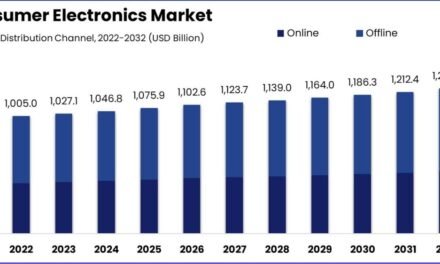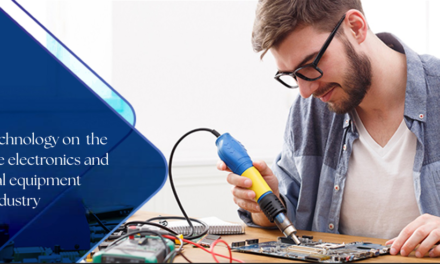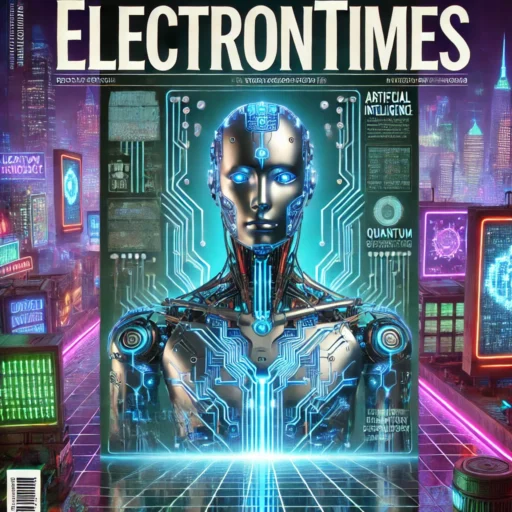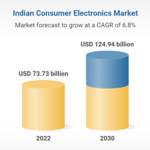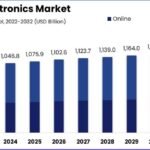The electronics and electrical equipment industry is continuously evolving, influenced by new technological advancements, shifting consumer demands, and changing regulatory landscapes. Here are the latest trends shaping the future of the industry:
1. 5G and Beyond
- Massive Deployment of 5G: 5G technology is expected to revolutionize the industry by enabling faster, more reliable, and lower-latency communication. This will accelerate innovations in IoT, autonomous vehicles, smart cities, and industrial automation. The demand for 5G-enabled devices and infrastructure will drive significant growth in electronics and electrical equipment.
- 6G Research: While 5G is still being deployed, the research and development of 6G technology is already underway. 6G promises even faster data speeds, low-latency applications, and the integration of advanced AI-driven networks. This will likely have profound impacts on communication, healthcare, and various industrial sectors.
2. Internet of Things (IoT) Expansion
- Smart Homes and Cities: The IoT continues to expand, connecting billions of devices worldwide. Smart homes, wearables, connected appliances, and smart cities (with sensors and AI systems for traffic, energy management, etc.) are becoming increasingly prevalent. This trend will drive the demand for new electronics and electrical components that support IoT connectivity and data processing.
- Industrial IoT (IIoT): The industrial sector is seeing increased use of connected devices for predictive maintenance, supply chain optimization, and energy management. IIoT is transforming industries like manufacturing, agriculture, and logistics, requiring specialized electronics and sensors.
3. Artificial Intelligence (AI) and Machine Learning (ML) Integration
- Smart Manufacturing and Automation: AI and machine learning are becoming integral to manufacturing processes. AI-driven automation can optimize production lines, improve quality control, and reduce costs. Robotics powered by AI is also helping with precision tasks in assembly lines, reducing human labor and errors.
- AI-Powered Electronics: AI is being embedded into consumer electronics, such as smartphones, wearables, and home assistants. Devices are becoming “smarter,” able to anticipate user needs, improve user experiences, and increase efficiency.
4. Electric Vehicles (EVs) and Sustainable Transportation
- Growth in Electric Vehicle Adoption: The global shift toward electric vehicles (EVs) continues to accelerate, driven by environmental concerns, government incentives, and advancements in battery technology. As demand for EVs grows, so does the need for electrical components like batteries, chargers, power electronics, and electric drive systems.
- Charging Infrastructure Development: Alongside EV adoption, there is a growing need for widespread charging infrastructure, such as fast-charging stations and wireless charging systems. This will further boost the demand for electrical equipment in the transportation sector.
- Battery Technology Advancements: Innovations in battery technology, including solid-state batteries and improvements in lithium-ion batteries, will play a key role in enhancing EV range, performance, and charging speed. This will significantly impact the energy storage and electrical components market.
5. Sustainability and Green Technology
- Renewable Energy Integration: The transition to renewable energy sources such as solar, wind, and hydroelectric power is reshaping the energy sector. The development of energy-efficient electrical equipment like smart grids, energy storage systems (e.g., batteries), and renewable energy generation equipment is a key trend.
- Circular Economy: The push for a circular economy—where products are designed for reuse, recycling, and sustainability—has led to increased focus on eco-friendly electronics. Companies are adopting green practices, reducing e-waste, and designing products with longer lifecycles and recyclable components.
- Energy-Efficient Products: As governments and consumers push for sustainability, the demand for energy-efficient electronics and electrical devices continues to rise. From LED lighting to energy-efficient home appliances and electric vehicles, sustainability is becoming a primary driver in product development.
6. Advanced Manufacturing Technologies
- Automation and Robotics: The implementation of advanced robotics, AI, and automation in manufacturing processes is transforming the industry. Smart factories with connected robots, automated assembly lines, and real-time data analytics are enabling more efficient and flexible production processes.
- Additive Manufacturing (3D Printing): 3D printing technology is gaining traction in the production of electronics components, from prototyping to low-volume manufacturing. It allows for more customization, reduced material waste, and shorter time-to-market.
- Nanoelectronics: Advances in nanotechnology are enabling the development of smaller, more powerful, and energy-efficient electronics. This has applications in fields such as semiconductors, sensors, and medical devices, pushing the limits of miniaturization and performance.
7. Semiconductors and Advanced Chip Technologies
- Next-Generation Semiconductors: The demand for more advanced semiconductor chips continues to grow, driven by the proliferation of technologies like 5G, AI, and IoT. Companies are investing in new materials, such as silicon carbide (SiC) and gallium nitride (GaN), to create more efficient power semiconductors for electric vehicles and renewable energy systems.
- Chip Shortages and Localization: The semiconductor industry faces a significant shortage, which has impacted various sectors, including automotive and consumer electronics. In response, countries are investing in local semiconductor manufacturing capabilities to reduce dependency on global supply chains and mitigate future shortages.
8. Edge Computing and 5G-Enabled Devices
- Edge Computing: Edge computing is becoming more important as IoT devices generate massive amounts of data. Instead of sending all data to the cloud for processing, edge computing allows data to be processed locally at the “edge” of the network, reducing latency and bandwidth requirements. This trend is driving the development of specialized electronics and hardware that support local data processing.
- 5G-Enabled Devices: The rollout of 5G networks is driving demand for new devices capable of handling high-speed data transmission. This includes everything from smartphones to wearables, automotive applications, and industrial equipment that rely on low-latency, high-bandwidth connectivity.
9. Augmented Reality (AR) and Virtual Reality (VR)
- Consumer and Industrial Applications: AR and VR are becoming more integrated into both consumer electronics and industrial applications. AR is being used in areas like retail (virtual try-ons) and healthcare (surgical visualization), while VR is transforming sectors like gaming, education, and training.
- Mixed Reality Devices: The development of mixed reality (MR) devices, such as smart glasses, is gaining traction, offering immersive experiences that combine AR and VR. These devices require sophisticated electronic components, such as sensors, processors, and displays.
10. Quantum Computing and Advanced Computing Hardware
- Quantum Computing: Quantum computing is a cutting-edge technology that has the potential to revolutionize industries like cryptography, material science, and artificial intelligence. Although still in its early stages, advances in quantum hardware are pushing the boundaries of electronics, creating new opportunities for chip manufacturers and researchers.
- High-Performance Computing (HPC): The demand for high-performance computing systems is rising, particularly for applications in AI, scientific research, and data analysis. These systems require advanced processors, cooling systems, and interconnects.
11. Cybersecurity and Data Privacy
- Security-Driven Design: As more devices become interconnected, ensuring the security and privacy of data is critical. Electronics manufacturers are integrating robust cybersecurity features into their products, especially with the rise of IoT devices, to prevent hacking and data breaches.
- Blockchain for Security: The use of blockchain technology in securing transactions, supply chains, and data is gaining momentum, especially for industries like manufacturing and automotive.
Conclusion
The future of the electronics and electrical equipment industry will be shaped by advancements in 5G, AI, IoT, and sustainability, among others. The growing need for more energy-efficient, interconnected, and secure technologies will push the boundaries of innovation. Companies that can successfully embrace these trends while addressing challenges such as supply chain resilience, sustainability, and cybersecurity will be well-positioned for success in the coming years.
Hashtags
#AIinElectronics #MachineLearning #ArtificialIntelligence #AIRevolution #SmartTech #AIinTech #IoT #ConnectedDevices #SmartDevices #IoTInnovation #SmartHomeTech #IndustrialIoT #5GRevolution #5GTech #5GInnovation #5GNetwork #FutureOf5G #5GConnectivity #SustainableTech #GreenElectronics #EcoFriendlyTech #CleanTech #GreenManufacturing #SustainabilityInTech #Automation #Robotics #SmartManufacturing #RoboticInnovation #AutomationTech #Industry4_0 #Blockchain #BlockchainTech #DecentralizedTech #SmartContracts #TechSecurity #BlockchainInnovation #ARTech #VirtualReality #AugmentedReality #ImmersiveTech #Metaverse #VirtualTech #WearableTech #SmartWearables #HealthTech #FitnessTech #WearableInnovation #TechForHealth #QuantumComputing #QuantumTech #QuantumInnovation #FutureComputing


